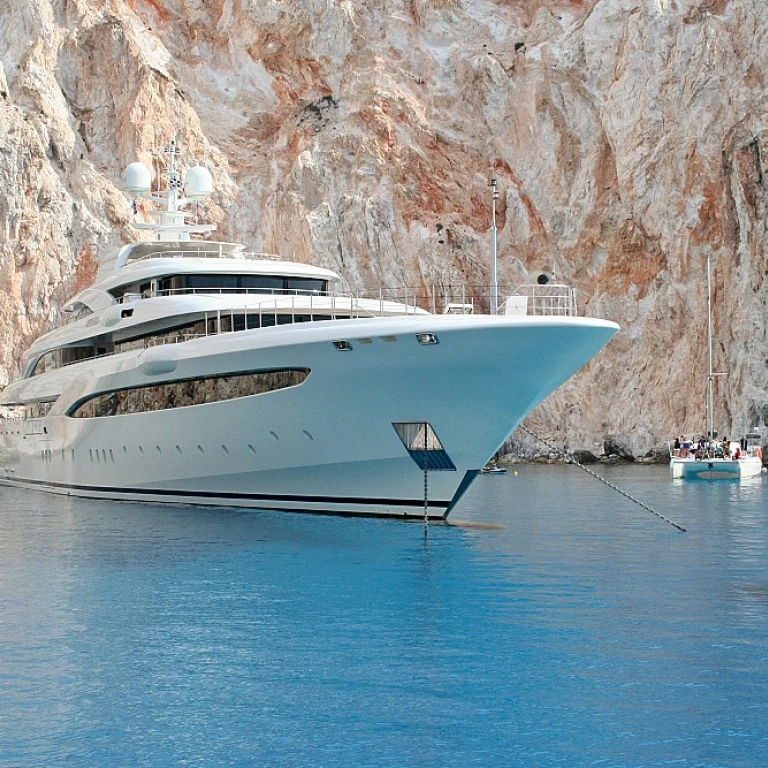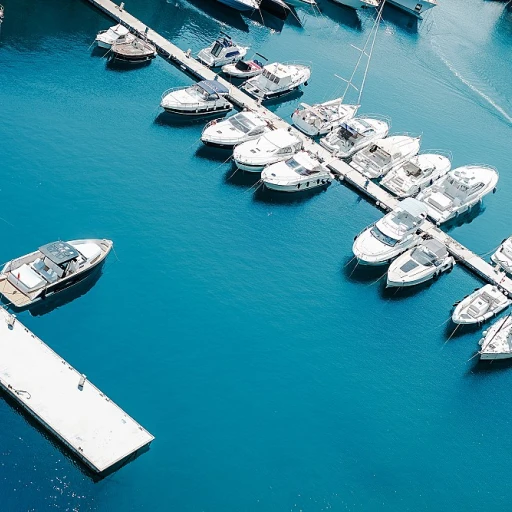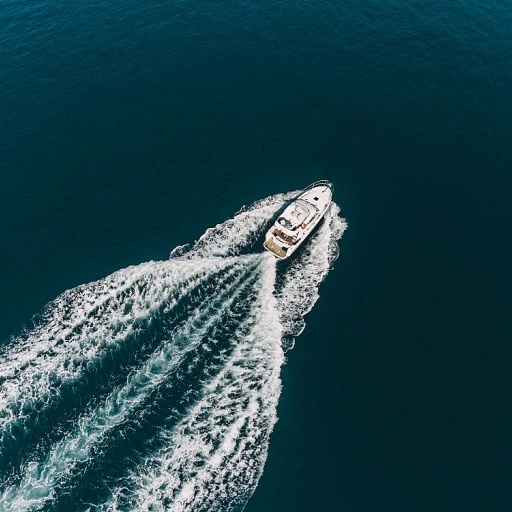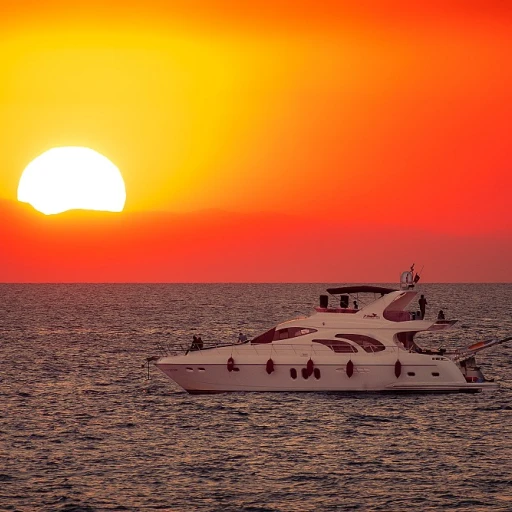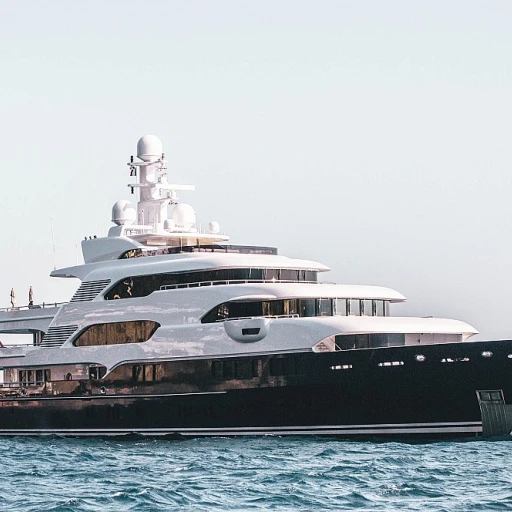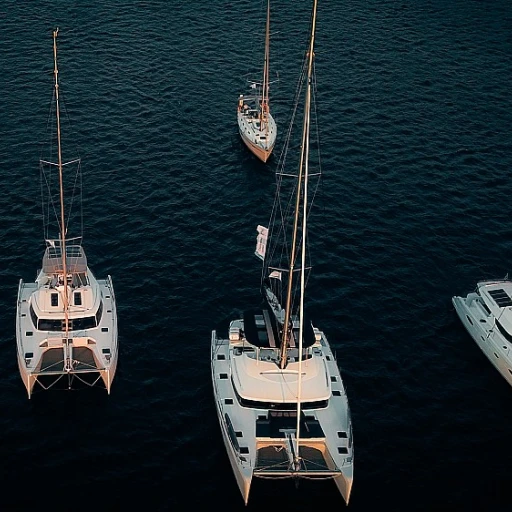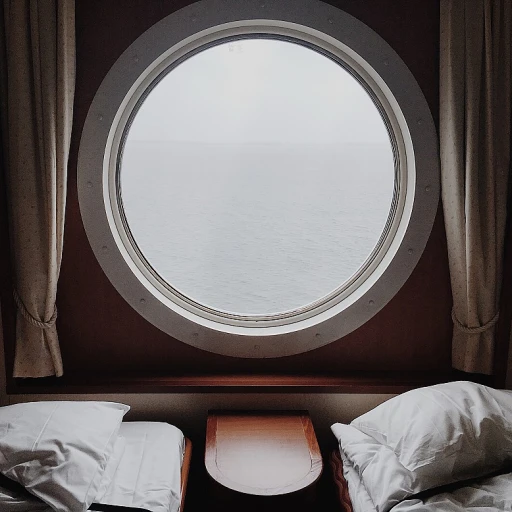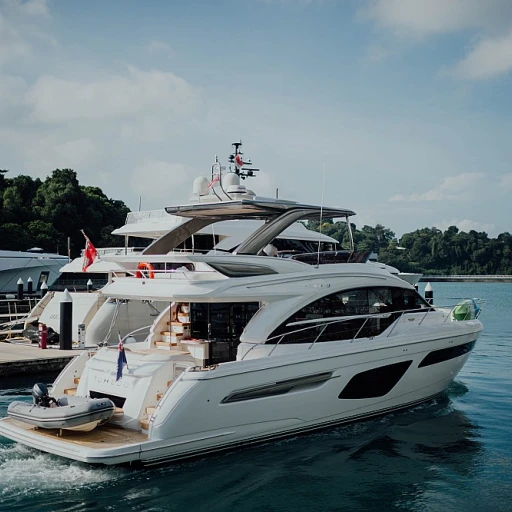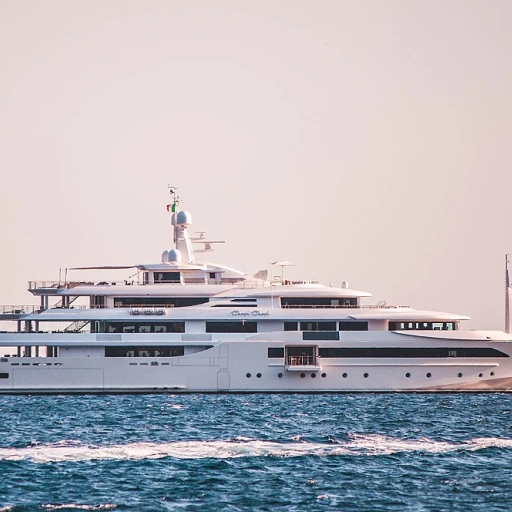
The Legacy of Classic Yacht Design
The Essence of Classic Yacht Design and Its Timeless Appeal
The grandeur of classic yacht design has, for decades, set the standard for luxury sailing, offering an undying appeal for yacht enthusiasts. Revered for their elegance and timeless beauty, classic yachts encapsulate a history rich in nautical triumphs. With designs shaped by the need for speed, seaworthiness, and opulent comfort, these historic vessels have paved the way for what we consider the pinnacle of maritime luxury today. Statistics reveal that a significant portion of yacht owners deeply appreciates traditional aesthetics, with market analysis highlighting a stable demand for classic yachts amidst technological advancements.
Decoding the Aesthetics: The Marriage of Form and Function in Yacht Design
Delving into the aesthetics of classic yachts, it's the seamless blend of form and function that strikes a chord. Masters of design and engineering from the annals of maritime history such as Nathanael Herreshoff and C. Raymond Hunt have contributed to an enduring design ethos, producing yachts that are not just visually enticing but astounding in their performance as well. Reference to these design legends is often seen in modern luxury sailing vessels, with contemporary designers citing historical blueprints as benchmarks of excellence. The J-Class yachts, with their sleek lines and towering sails, continue to be emblematic of supreme craftsmanship and aesthetic prowess, aptly demonstrating the adage 'form follows function'.
Celebrating Heritage: The Iconic Yachts That Have Defined Elegance
Certain names stand out when discussing heritage in yacht design—boats like the revered America's Cup contenders and the majestic sailing yachts of the early 20th century. The beauty of yachts like Shamrock, Endeavour, and Velsheda are not just visual but woven into the fabric of sailing culture. Their stories of competition, innovation, and adventure have left a lasting imprint. Today's luxury yachts carry forward this legacy, often referencing the grandeur and elegance of such historical vessels to captivate a new generation. Examples of contemporary yachts that draw direct inspiration from historic yachts are abundant, demonstrating that the grace of classic designs is far from being antiquated. It's a vivid illustration of how the past informs current luxury and aesthetic trends in yacht ownership.
From Mahogany Masters to Carbon Fiber Craft: The Materials That Made History
The early yachts stood apart not only for their design but for the materials that made them legendary. Solid wood, brass fittings, and cotton sails were once the hallmarks of the finest vessels. As modern yachting has evolved, so too have the materials, with carbon fiber, advanced composites, and cutting-edge sail fabrics becoming the standard. However, a niche market of aficionados continue to cherish the classic materials for their authenticity and historical value, ensuring that the art of yacht-building with traditional materials is not lost. This reverence for the old-world materials highlights a demographic passionate about maintaining and sailing historic yachts as moving pieces of art. The investment in preserving these vessels underscores a statistic that suggests classic yachts retain and even appreciate in value due to their uniqueness and historic significance.
Technological Advances Inspired by the Past
Revolutionizing Sailing: Yesterday's Ingenuity Fuels Today's Innovations
The seamless melding of classic design and cutting-edge technology has become a beacon in luxury yacht ownership. Historical yachts have been the vanguard of innovation, setting a precedent that propels the engineering marvels we see in today’s yacht market. It was these historic vessels that first introduced the use of materials like teak and brass, which provided durability and elegance, a trend that persists in the modern yacht lexicon. Astounding growth in maritime navigation technologies can trace their lineage to the rudimentary, yet revolutionary compasses and star-based navigation of the past.
Smart Integration: When Vintage Meets Vessel Innovation
One example of how vintage has catalyzed progress is the adaptation of hybrid propulsion systems in yachts. These eco-friendly advancements are motivated by a desire to enhance performance while reducing environmental impact—a concern that is increasingly paramount among yacht owners. Historical models, with their dependable sails and appreciation for the power of wind, have inspired the resurgence of sailing and the integration of sails even on motor-yachts to increase efficiency. According to the International Yacht Bureau, smart hybrid systems can reduce fuel consumption by up to 20%—a substantial statistic for any yacht owner considering the future of their investment.
From Hull to Hybrid: The Evolution of Yacht Efficiency
The hull designs of classic yachts have shaped the hydrodynamic developments we witness today. Naval architects often reference the sleek, streamlined shapes of historical vessels that cut through the sea with ease—an aesthetic that goes hand in hand with modern performance standards. In fact, a study from the Journal of Marine Science and Engineering revealed that advancements in hull design could yield speed increases of up to 15% for modern yachts. This entrenched respect for the power of design is why many seek to own and preserve historic yachts, ensuring that their legacy deeply influences the benchmarks of naval aesthetics and functionality.
At the Helm of Technology: Antique Yachting Insights Guiding Modern Navigation
Antique yachts, often praised for their intricate woodwork and handcrafted details, also housed the nascent forms of navigational aides we deem essential today. From these primordial tools, we've seen the advent of highly sophisticated yacht management systems, empowering sailors to traverse the oceans with precision and safety like never before. The transformation from classic, paper chart tables to state-of-the-art GPS mapping and radar systems is just one example of historic principles informing today’s technological landscape. These systems, quoted by experts as 'the brain of the yacht,' represent a synthesis of heritage and high-tech advancements, giving yacht owners unprecedented control and confidence in their seafaring ventures.
Historic Yachts: A Testament to Craftsmanship
Embracing the Past: The Timeless Allure of Vintage Yachts
The aesthetic appeal and intricate detail of historic yachts are profound examples of seafaring splendor. Iconic vessels such as the Shamrock V or the J Class Endeavour have set benchmarks in terms of design and craftsmanship that are still celebrated by modern yachts. Often handcrafted with materials like teak and mahogany, these floating masterpieces exhibit an enduring attraction that harks back to a bygone era of elegance on the high seas. According to a study by The International Yacht Restoration School, over 85% of vintage yacht owners believe their vessels possess a unique soul and character that cannot be replicated in modern builds.
Exquisite Craftsmanship Through The Ages
The quintessence of luxury sailing, historic yachts boast unparalleled craftsmanship. The construction of these magnificent vessels required thousands of man-hours from skilled artisans. A report by the Traditional Maritime Skills project underlines that traditional shipwright skills, though on the wane, are essential in preserving and restoring the integrity of classic yacht designs. Meticulous joinery, ornate carvings, and hand-forged metalwork reflect a dedication to artistry that is often missing in contemporary yacht production.
Enduring Stories Engraved in Wood and Sail
Every historic yacht narrates a rich tapestry of stories, a testament to their vibrant legacy. Take, for instance, the Corsair series built for J.P. Morgan, which in the eyes of many yacht connoisseurs, encapsulates the zenith of Gilded Age yacht construction. These yachts are not mere vessels; they are chronicles of maritime history, with journeys and regattas that have captured the imaginations of generations of sailors and enthusiasts. According to Yachting World Magazine, the resale value of yachts that have a storied past can often exceed those of newer models, primarily due to their historical significance and classic appeal.
Preservation Efforts Elevating Yachting Heritage
Understanding the importance of these historical treasures, organizations like The Classic Yacht Owners Association place significant emphasis on the preservation of vintage yachts. By maintaining and operating these vessels, owners and restoration teams keep the ancestral flame of yacht craftsmanship alive. A recent survey by The World's Top Yachts Index found that preserved historic yachts, which make up about 10% of the yacht market, can often see an increase in value by up to 20% post-restoration, highlighting the economic and cultural value inherent in their conservation.
Integrating Tradition with Modern Comforts
Innovatively Blending Time-Honored Appeal with Contemporary Luxuries
In today’s luxury yacht market, integrating tradition with modern comforts is not just a trend; it's a craft. According to the latest market research, the global luxury yacht market size was valued at $5.8 billion in 2020 and is projected to reach $10.2 billion by 2028. Owners are increasingly seeking yachts that offer the charm of historic design with the sophistication of modern amenities. This fusion creates an ambiance that cannot be replicated by newer models, giving rise to an exclusive segment of yachts that celebrate history without sacrificing comfort.
Take the iconic J-Class yachts, for example. These vessels were revered for their performance in the early 20th century and are now being retrofitted with state-of-the-art systems to enhance their seaworthiness and onboard experience. Reputed refit yards collaborate with the finest interior designers to integrate luxurious features such as underfloor heating, stabilization systems, and advanced entertainment technologies, melding the grandeur of the past with the innovations of the present.
Craftsmanship Meets Cutting-Edge Amenities
- Advanced Navigation Systems
- Seamless Connectivity and Wi-Fi
- High-End Appliances and Fixtures
- Energy-Efficient Power Systems
Incorporating these amenities into a historic vessel requires a carefully planned approach. Upgrading the navigation system, for example, often involves the delicate task of embedding GPS and radar without disrupting the yacht’s classic line. Citing an example, the restoration of the famed sailing yacht Shenandoah of Sark included state-of-the-art systems hidden within its original 1902 framework, demonstrating how technological integrations can be seamlessly achieved.
Enhancing the Yacht’s Aesthetic and Functional Value
Owning a yacht that stands the test of time in both design and functionality is a statement in itself. The attention to detail in maintaining the visual and structural integrity of a historic yacht, while incorporating modern technologies, significantly elevates its value. This meticulous process has shown that the resale value of properly maintained and updated historic yachts can often rival, if not surpass, those of newer yachts. One only has to look at the soaring popularity and prices of carefully maintained vessels from builders like Herreshoff and Feadship to understand the investment potential that these timeless yachts hold.
As per yacht brokers, updated historic yachts tend to sell much quicker than their untouched counterparts. Owners of such vessels frequently express that the blend of traditional aesthetics and 21st-century technology not only enhances their sailing experience but also serves as a conversation piece, enabling them to share the yacht's storied past with guests while enjoying contemporary comforts.
The Investment Value of Owning a Historic Yacht
The Financial Allure of Vintage Yachts
When stepping aboard a historic yacht, owners are not just purchasing a vessel; they are investing in a slice of maritime heritage. According to recent market analyses, vintage yachts have seen a consistent appreciation in value, especially if they are well-maintained and possess a noteworthy provenance. A report by The Superyacht Group suggests that yachts with a significant history or a story to tell often hold or increase their value over time, making them a solid investment opportunity. Furthermore, data from YachtWorld echoes this sentiment, indicating that classic yachts can accrue value akin to fine art.
Yacht Collectability and Market Demand
- Scarcity: With a limited number of historic yachts available, they're highly sought after by collectors.
- Authenticity: Original features and a well-documented history can drive up demand.
- Recognition: Yachts that have graced the silver screen or been the pleasure crafts of famous individuals carry an extra layer of desirability.
The exclusive nature of owning such a timeless piece is highlighted in comments from industry experts. "Ownership of a historic yacht is not just a privilege, but a stewardship," remarks a leading voice in Yacht preservation. This sentiment is shared among the community, where preserving the elegance and sophistication of these vessels is seen as a high calling.
Enhancing Asset Value Through Refurbishment
Retrofitted yachts that seamlessly blend vintage charm with modern amenities can result in a significant boost in market value. Specialists in yacht refurbishment note that a sympathetic restoration that respects the yacht's origins, while introducing contemporary conveniences, can make these vessels more appealing for modern use. A study by Boat International indicates that yachts which undergo this type of refurbishment often see an increase in value by as much as 50%. This serves as a testament to the value of integrating tradition with comfort, as discussed in the previous sections of the article.
Charter Income and Tax Advantages
Owning a historic yacht can also offer financial benefits in terms of operational income and tax considerations. Yachts with a classic appeal are in high demand in the charter market. In fact, the rarity and allure can justify premium charter rates. The Global Yachting Market Analysis shows a growing trend for unique charter experiences, leading to revenue opportunities for owners of such distinguished vessels. Furthermore, there can be tax incentives available, varying by country, for the maintenance and restoration of registered historic vessels, which can further enhance the financial viability of such an investment.

